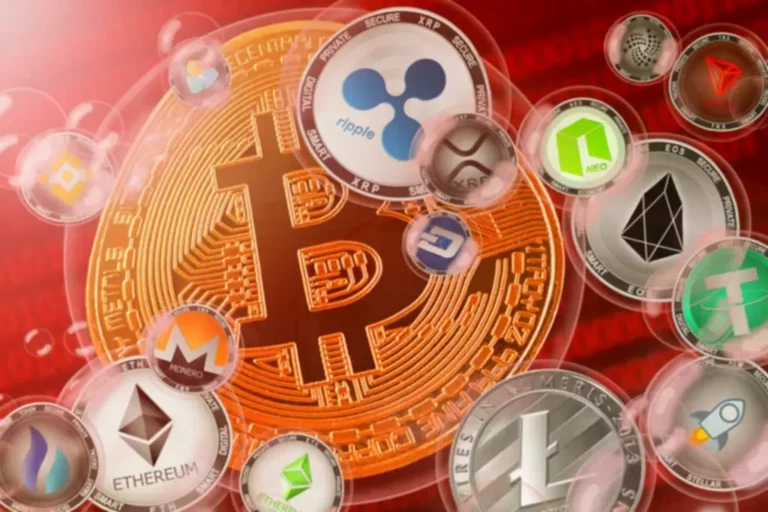Content
When applied to multi-party digital agreements, smart contract applications can reduce counterparty risk, increase efficiency, lower costs, and provide new levels of transparency into processes. The creation stage is where the developer writes the smart contract using programming languages like Solidity or Vyper. Proof of space Here, developers can set conditions for execution, define functions, and establish how the contract will interact with data and other contracts on the blockchain. Every single application you use today (Facebook, Twitter, Netflix) is comprised of code that can in theory be carried out and executed via smart contracts on decentralized blockchains.
Boosting security for identity and access management
Smart contracts undoubtedly offer the world a safer, more verifiable way of creating societal agreements that involve the transfer of value and https://www.xcritical.com/ data. However, the landscape of blockchains and smart contracts is still nascent, and developers must face a variety of limitations as they look to build out the vision of the verifiable web. Events in smart contracts serve as notifications to decentralized applications (dApps), blockchain explorers, and other sources about changes made to the contracts. They can listen to these events and use them to trigger and execute dependent logic accordingly. There are hundreds of blockchains where developers can build smart contracts and deploy web3 applications.
Which crypto platform has a smart contract?
With all of these established use cases, and the ongoing discovery and development of many more, smart contracts and dApps how do smart contracts work are poised to continue revolutionizing the world of digital agreements. The widespread use of bespoke smart contracts for myriad types of transactions that can lower costs and increase transaction speeds may be closer than you think. Some U.S. states have begun to permit the use of smart contracts and blockchain in the legal industry in certain contexts.
NFTs and Smart Contracts: Blockchain Technology in Gaming
They offer complete autonomy, and because everything is backed up on to the blockchain, smart contracts are completely safe against loss of data. A traditional (physical) contract involves two or more parties, such as individuals, entities, and governments. They agree to contract terms and conditions to execute transactions via a third party. This third party could be a lawyer, a government organization, or any other entity.
These contracts allow token holders to vote on proposals or changes to the network’s rules, ensuring democratic and transparent governance. The video is a great place to start if you want to learn more about how smart contracts can improve the way we work. Smart contracts can significantly enhance administrative efficiency for brick-and-mortar retailers. By automating payment processes to contractors, digitizing payroll administration, and providing real-time tracking, retailers can reduce burdensome tasks. Additionally, using blockchain identifiers on inventory units improves supply chain visibility.
This example illustrates how smart contracts can automate and streamline financial transactions, making them faster, cheaper, and more secure. Because they run on top of blockchains, smart contracts are automatically and deterministically executed exactly as programmed. In the context of enforcement, this hypothetically means that no party involved in a smart contract transaction can change its outcome or renege on terms outlined in a smart contract. From minting tokens with token contracts to making decisions through governance contracts, smart contracts can be tailored to meet specific needs. However, today, we are only delving into the most popular smart contract types.
- That means the transaction cannot be changed, and only parties who have been granted permission can see the results.
- Shorter processing times will result in lower costs for consumers – including premium rates.
- By automating the submission and processing of claims, we can reduce the need for manual intervention.
- Blockchains began to experiment over the next few years by adding new programmatic conditions (called operation codes or opcodes).
- An artist may issue a piece of their work as a non-fungible token (NFTs) that can be sold on a secondary market.
- WASM allows developers to create smart contracts that can run in a web browser and be integrated into blockchains and other distributed ledgers using various programming languages such as C, JavaScript, TypeScript and Rust.
When an oracle confirms that the publisher has done what it was supposed to do, the smart contract triggers a payment. For example, a clause could stipulate that a social media account with a large following must promote a discount code. When there are 100 legitimate purchases that use the code, the owner of the social media account receives payment. In addition, smart contracts could prevent deceptive tactics like pixel stuffing or publishers overstating the impressions generated by an ad. In supply chain management, It can be used to automatically track the movement of goods and ensure that they are delivered as agreed upon. In digital identity verification, It can be used to verify that an individual is who they claim to be and to grant or revoke access to certain resources based on this verification.
However, since this is an emerging technology, awareness about smart contracts remains limited. In this article, we will explore smart contract use cases in different industries to help users identify how they can leverage smart contracts to reduce their costs and increase compliance. Blockchains are isolated networks, meaning blockchains have no built-in connection to the outside world. Without external connectivity, smart contracts cannot communicate with external systems to confirm the occurrence of real-world events nor can they access cost-efficient computational resources. Similar to a computer without the Internet, smart contracts are extremely limited without real-world connectivity.
According to MarketsandMarkets, the blockchain identity management market is expected to grow from $90.4 million in 2018 to $1.93 billion by 2023, highlighting the increasing adoption of this technology. Traditional contracts, like rental agreements, require third-party oversight for enforcement and dispute resolution. For instance, a tenant must pay rent on the first day of each month, and if disputes arise, a governmental body must intervene.
The rise of blockchain technology, especially Ethereum, has made smart contracts viable by leveraging immutability, decentralization, and cryptographic security. These features ensure transparent and secure execution of agreements without intermediaries. In 2017, Delaware passed Senate Bill 69, which allows businesses to be incorporated and managed using blockchain technology.
These contracts can automate payment processes, ensuring funds are released only when specific criteria are met. For example, a payment contract could be set up to release funds to a seller once the buyer has received the goods or services. The IBM Blockchain Platform supports smart contracts written in Go and Node.js. Read this tutorial to learn how to get started writing encoded business logic, terms and conditions for execution on blockchain. You can join existing blockchain networks that are transforming industries by bringing revolutionary trust and transparency to supply chains, global trade, international payments, our food supply and much more.

Smart contracts and blockchain could benefit the automobile industry by storing readily available information about vehicle maintenance and accident and ownership history. Smart contracts have the potential to transform the insurance industry by automating policy issuance, claims processing and premium payments. By using smart contracts, insurers can streamline operations, reduce paperwork and provide faster and more transparent services to policy holders. Additionally, smart contracts can streamline voter registration, verify identities, and count votes in real-time, leading to faster and more reliable results. A significant statistic to consider is that blockchain technology can reduce election costs by up to 90%, according to some studies, making the process more economical and accessible.
Smart or self-executing contracts are computer programs created on a blockchain that facilitate transactions when parties satisfy a predetermined set of conditions. Also, there is no need for the parties to rely on an intermediary for the agreement’s validation and execution. They have three main components – signatories (parties), subject of the contract, and contract terms. The parties involved must satisfy the terms of the agreement (a set of rules and penalties) for a successful transaction. Besides eliminating the need for an intermediary, executing agreements through digital contracts is considered cost-effective and secure.

It means it is impossible to reverse, alter, or tamper the codes, rules, and even the transactions once programmed on the blockchain. Creating a smart contract usually requires writing it in a programming language that supports it (with the most popular being Solidity), testing & debugging it to ensure it’s secure, and deploying it to the blockchain. These contracts automate the trading process and ensure transparency and security of asset transfers.
While there is room for improvement and innovation, the growing adoption of smart contracts highlights their intended benefits of transparency, accountability, and efficiency. Ethereum’s smart contract functionality is built on its own programming language, Solidity, which enables developers to create decentralized applications (dApps) and execute smart contracts on the Ethereum blockchain. EOS uses a Delegated Proof of Stake (DPoS) consensus mechanism, which enables fast and efficient execution of smart contracts. TRON utilizes the Solidity programming language, similar to Ethereum, and aims to provide a high-performance smart contract platform.

